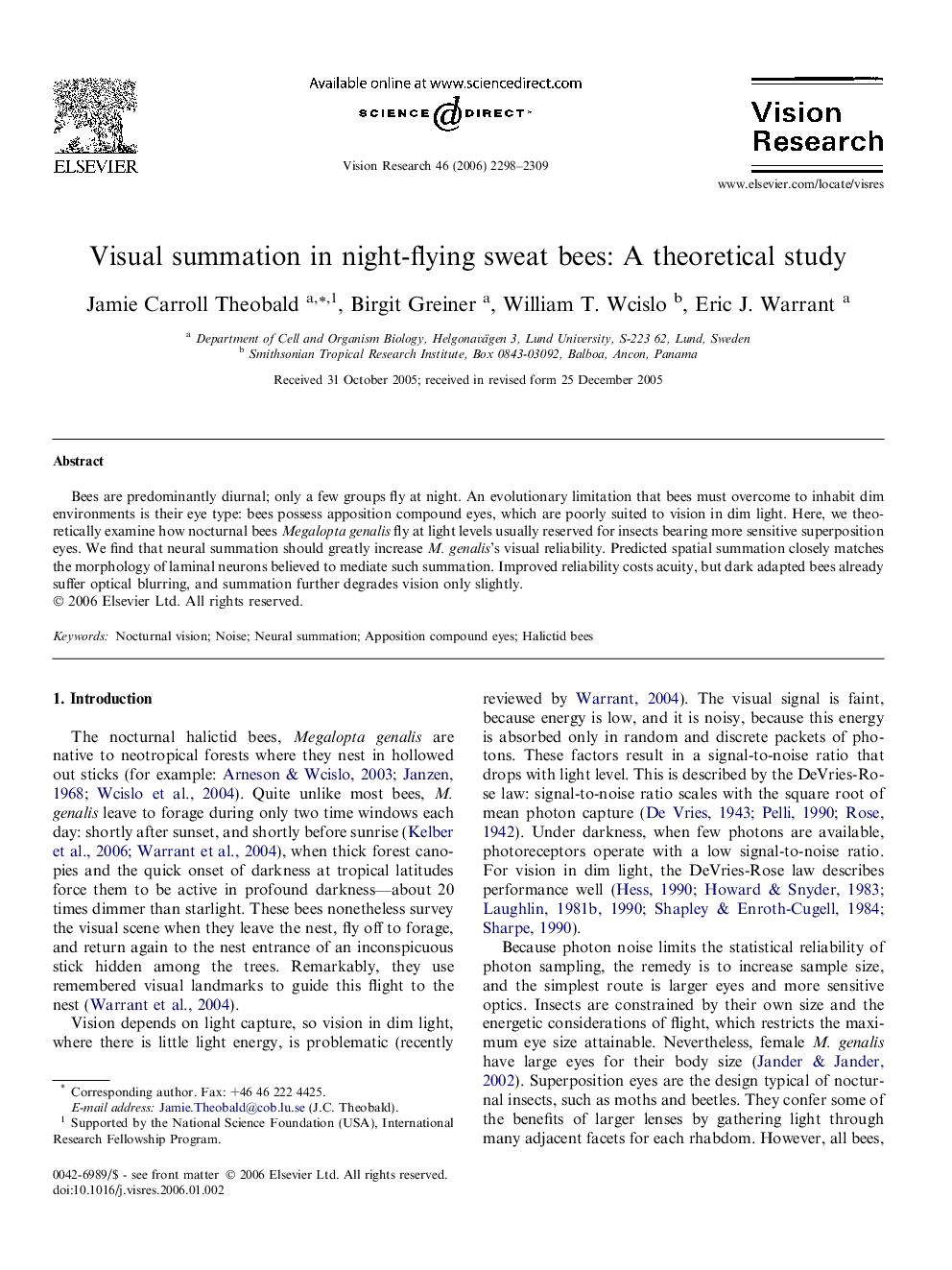| Article ID | Journal | Published Year | Pages | File Type |
|---|---|---|---|---|
| 4036685 | Vision Research | 2006 | 12 Pages |
Bees are predominantly diurnal; only a few groups fly at night. An evolutionary limitation that bees must overcome to inhabit dim environments is their eye type: bees possess apposition compound eyes, which are poorly suited to vision in dim light. Here, we theoretically examine how nocturnal bees Megalopta genalis fly at light levels usually reserved for insects bearing more sensitive superposition eyes. We find that neural summation should greatly increase M. genalis’s visual reliability. Predicted spatial summation closely matches the morphology of laminal neurons believed to mediate such summation. Improved reliability costs acuity, but dark adapted bees already suffer optical blurring, and summation further degrades vision only slightly.
